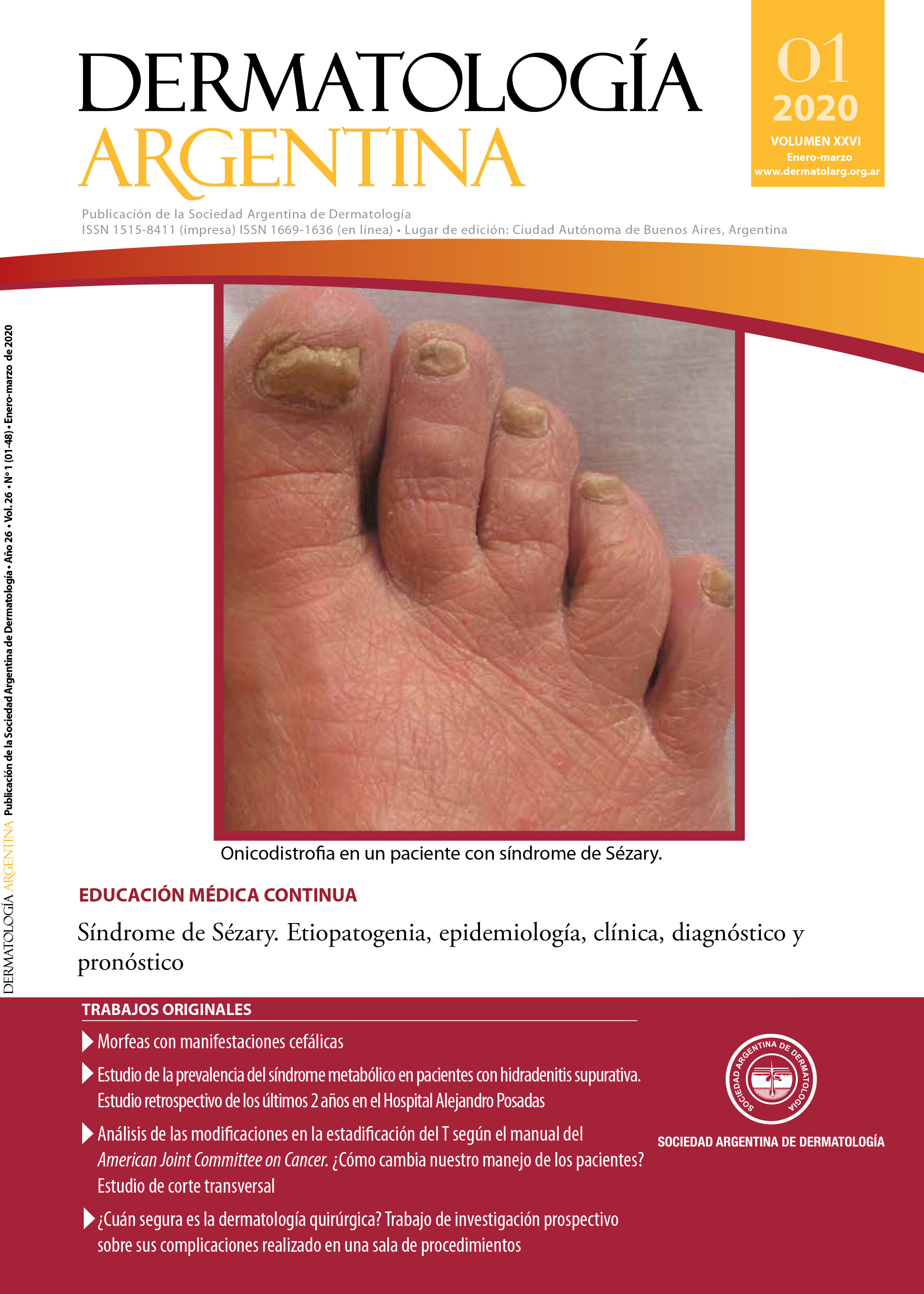Bullous pemphygoid and blisters in the newborn
DOI:
https://doi.org/10.47196/da.v26i1.2067Keywords:
Pregnancy dermatosis, Bullous pemphygoid, Blister diseasesAbstract
Gestational pemphigoid is a rare, autoimmune dermatosis that occurs during pregnancy. It is characterized by an autoimmune response against hemidesmosome proteins, generating a cleavage between the epidermis and the dermis in the skin and mucous membranes. Clinically it presents with intense pruritus, plaques and erythematous papules that evolve to blisters that are distributed mainly in the abdomen and limbs. The complications are preterm birth and low weight for gestational age, with high risk of mortality.
References
I. Ambros-Rudolph CM. Dermatoses of pregnancy – clues to diagnosis, fetal risk and therapy. Ann Dermatol 2011;23:265-275.
II. Ambros-Rudolph CM, Müllegger RR, Vaughan-Jones SA, Kerl H, et ál. The specific dermatoses of pregnancy revisited and reclassified: results of a retrospective two-center study on 505 pregnant patients. J Am Acad Dermatol 2006;54:395-404.
III. Al-Saif F, Elisa A, Al-Homidy A, Al-Ageel A, et ál. Retrospective analysis of pemphigoid gestationis in 32 Saudi patients – clinicopathological features and a literature review. J Reprod Immunol 2016;116:42-45.
IV. Huilaja L, Mäkikallio K, Sormunen R, Lohi J, et ál. Gestational pemphigoid: placental morphology and function. Acta Derm Venereol 2013;93:33-38.
V. Borthwick GM, Sunderland CA, Holmes RC, Black MM, et ál. Abnormal expression of HLA-DR antigen in the placenta of a patient with pemphigoid gestationis. J Reprod Immunol 1984;6:393-396.
VI. Roth MM. Pregnancy dermatoses diagnosis, management, and controversies. Am J Clin Dermatol 2011;12:25-41.
VII. Semkova K, Black M. Pemphigoid gestationis: current insights into pathogenesis and treatment. Eur J Obstet Gynecol Reprod Biol 2009;145:138-144.
VIII. Hallaji Z, Mortazavi H, Ashtari S, Nikoo A, et ál. Pemphigoid gestationis: clinical and histologic features of twenty three patients. Int J Womens Dermatol 2016;3:86-90.
IX. Jenkins RE, Hern S, Black MM. Clinical features and management of 87 patients with pemphigoid gestationis. Clin Exp Dermatol 1999;24:255-259.
X. Jenkins RE, Jones SA, Black MM. Conversion of pemphigoid gestationis to bullous pemphigoid-two refractory cases highlighting this association. Br J Dermatol 1996;135:595-598.
Downloads
Published
Issue
Section
License
El/los autor/es tranfieren todos los derechos de autor del manuscrito arriba mencionado a Dermatología Argentina en el caso de que el trabajo sea publicado. El/los autor/es declaran que el artículo es original, que no infringe ningún derecho de propiedad intelectual u otros derechos de terceros, que no se encuentra bajo consideración de otra revista y que no ha sido previamente publicado.
Le solicitamos haga click aquí para imprimir, firmar y enviar por correo postal la transferencia de los derechos de autor












